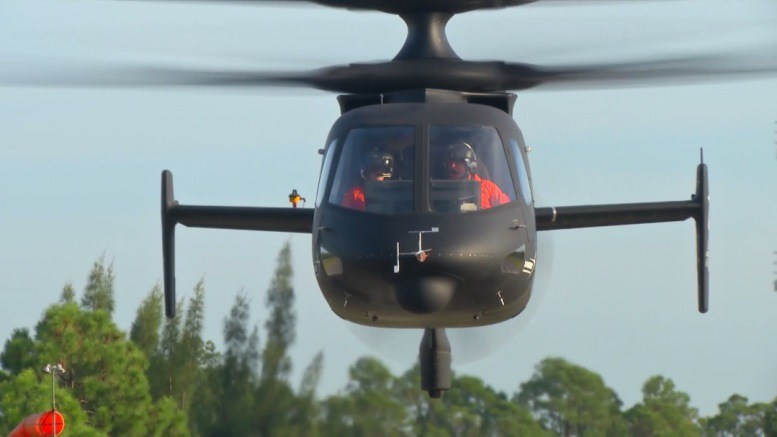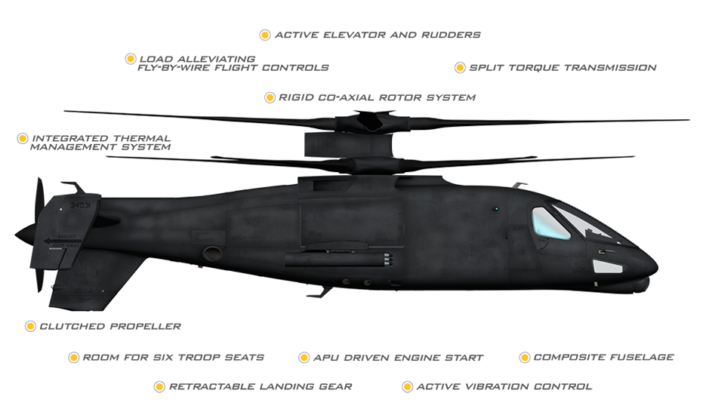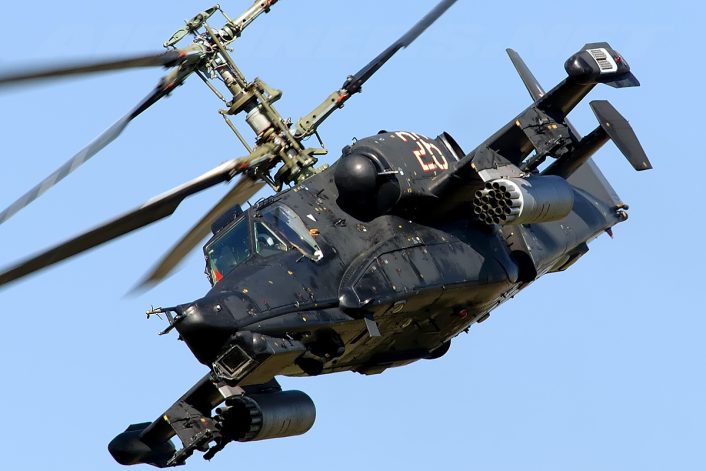
Posted on 04/23/2017 4:58:06 AM PDT by sukhoi-30mki

Proposed Helicopter Would Replace MH-6/AH-6 Little Bird if Adopted.
Lockheed Martin has released a new promotional video showing the S-97 Raider light tactical helicopter demonstrating many of its unique performance capabilities.
The S-97 Raider, if adopted by the U.S. military, would replace the aging family of MH-6/AH-6 Little Bird helicopters widely used since the Vietnam conflict as special operations and observation/light attack helicopters. The MH-6/AH-6 family first flew in 1963 making it a legacy platform that has been continuously updated for expanded roles. Most airframes in U.S. service are now aging and, because a light tactical helicopter is subjected to high stresses in operational and training use the older aircraft are approaching the end of their structural lifespan.
The new S-97 Raider is a significant technology update over previous light attack/observation helicopters. It uses a mostly carbon fiber composite fuselage like the MV-22 Osprey. The S-97 has much higher performance than the MH-6/AH-6 family, more internal space for up to 6 combat equipped troops, a unique co-axial rotor system and a host of additional technological advancements. Lockheed-Martin is firstly and specifically configuring the S-97 as a replacement of the U.S. Special Operations Command MH-6M Little Bird. The significant difference in top speeds between the MH-6M at only 175 MPH and the new S-97 at 276 MPH is just one example of the massive performance and capability improvement available with Lockheed-Martin’s new platform.

Innovative performance features of the new Lockheed-Martin/Sikorsky S-97 Raider. (LM)
Another key performance enhancement is that the S-97 program has greatly improved “hot, high and heavy” rotary wing performance. Helicopters often struggle with performance at high altitude in hot weather conditions and can become vulnerable to performance problems like “vortex ring state”. Vortex ring state likely contributed to the controlled crash of a highly modified U.S. special operations helicopter, the MH-X Stealth Black Hawk, during the May 2, 2011 raid to apprehend Osama bin Laden, Operation Neptune Spear.
Few years ago The Aviationist pointed out some similarities in the possible shape of the MH-X and the S-97.
The new S-97 has already demonstrated stable, controllable hover capability at 6,000 feet AGL and 95° Fahrenheit. The aircraft has also maneuvered at speed to 3g’s.
The co-axial or contra-rotating main rotors on the S-97 were originally conceived by Russian engineer Mikhail Lomonosov. This design has been proven on Russian designs including the successfully deployed newer Kamov KA-50 and KA-52 attack helicopters and much older designs like the KA-27 family of Kamov helicopters widely used in different versions in both military and commercial roles mostly by the Russians.

Contra-rotating main rotors were first developed and employed by the Russians including this Kamov KA-50 attack. (image credit: Russian Aviation Photography)
Advantages to a co-axial rotor system include equalizing the effects of torque compared to helicopters with one-directional large rotating blades or “rotary wings”. Helicopters with a single large rotor system have a tendency to “pull” or rotate in the direction of the main rotor blades’ rotation. To counteract the rotational force of a single main rotor the smaller tail rotor is mounted sideways as is conventionally seen on helicopters. The tail rotor on the new S-97 Raider is rear-facing, adding more thrust than a conventional sideways mounted rotor and contributing to the S-97’s higher top speed.
The S-97 Raider program was initially started to replace the aging OH-58 Kiowa Warrior observation helicopter under a then-$16 billion U.S. Army acquisition program named “Armed Aerial Scout.”
The program was put on hold prior to the U.S. Presidential election due to budgetary constraints. Sikorsky, the originator of the program, teamed with Lockheed-Martin to continue the program and adjusted the marketing focus to a broader mission set.
Exactly. I watched a life flight chopper drop down between tall Eucalyptus tree branches on the 101 in Encinitas, CA. Incredible flying but sketch.
This would definitely make such landings less risky.
I have a couple friends at Sikorsky. As a joke, I offered them a straight across trade, three old S-76Bs for two of these. They countered with the trade plus I bring a huge bag of cash.
I remember.
as a young medic in 1966 I was issued a Jeep-based front line ambulance (M-178, I think). It was basically a stretch M-38 and it was a very good vehicle, both on and especially off the road. I routinely heard, “Hey, Doc. We’re stuck. Pull us out,” from M-151 drivers. My response was usually, “Pound sand. You laughed at my old Jeep. Now you’re stuck. Karma.”
The M151 was a death trap and the front line ambulance version was worse!! Of course, I was familiar with the Jeep platform before I went into the Army.
We’re in a very rural area of WV. There are two or three ambulances for the whole county.
Nearest hospital with any sort of emergency room is at least an hour drive, and that’s after the ambulance arrives and packs up the patient. I think the “real” trauma center is over 3. It’s not unheard of for a chopper to be sent if someone has a medical emergency or serious injury. Probably happens a couple times a year.
200+mph top speed could likely save a quite a few lives over time.
... If you had enough airspeed, you could even stop the main rotor’s rotation altogether and fly it like a fixed-wing biplane (theoretically)...
Sounds like what Airwolf would do right before it went supersonic. LOL
In fact the head-on shot in the article reminds me a lot of Airwolf.
S-97 RAIDER™: The Next Big Thing in Army Aviation
https://youtu.be/HncZgouxt9k

I’d guess the blade configuration would make metro landings safer and the top speed would be an advantage ...
*******************************************
Air taxi from Dallas to Houston in one hour. Better than a high-speed rail system and much cheaper!
In fact the head-on shot in the article reminds me a lot of Airwolf.
***************************
As I recall, the Airwolf was a modified Bell 222.
Really liked that show. (Worked at Bell ‘65-2001)
Disclaimer: Opinions posted on Free Republic are those of the individual posters and do not necessarily represent the opinion of Free Republic or its management. All materials posted herein are protected by copyright law and the exemption for fair use of copyrighted works.